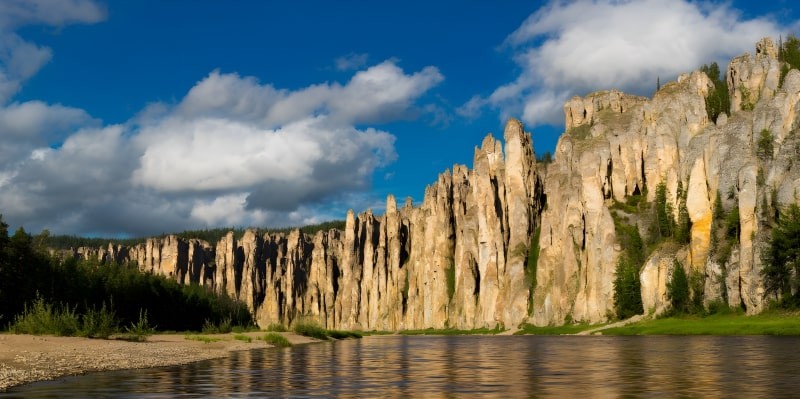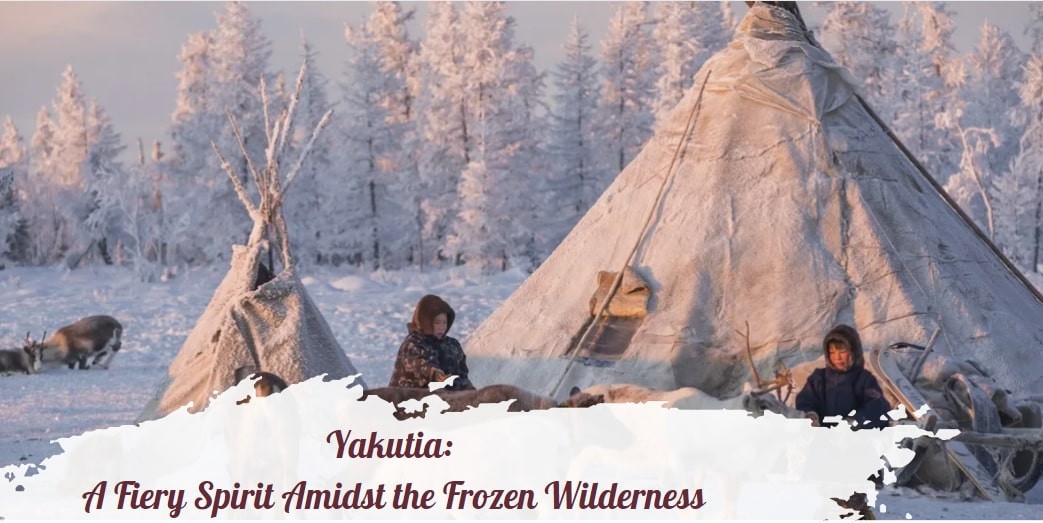
 |
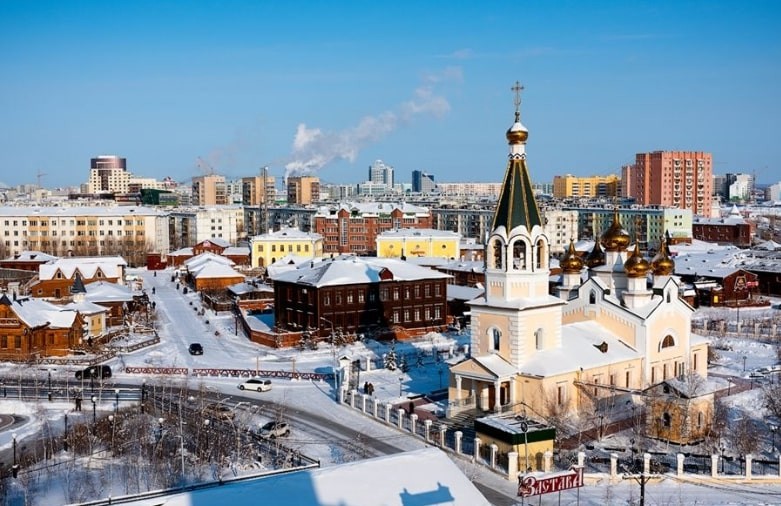
Capital of Yakutsk (Sakha Republic) from above. (Photo: darminaopel.ru) |
|
Yakutia is located in the northeastern part of Russia, stretching across three time zones. The average winter temperature in Yakutia is around −50°C, while in summer, it can rise to +30°C. The village of Oymyakon, located in Yakutia, holds the record as the coldest inhabited place in Russia, with the lowest temperature ever recorded being −71.2°C. Despite these extreme conditions, the region boasts a rich ecosystem, with 6,317 plant species, 300 bird species, about 40 types of fish, and many other animals. Snow blankets Yakutia for nine to ten months of the year. The winter landscape transforms into a serene, majestic picture, where snow-covered mountains and sparkling rivers create stunning natural scenery. In small villages, the laughter of children echoes from wooden houses, while families gather around the hearth to cook, share stories, and pass down their unique cultural traditions. The deep connection between the people and the natural world in Yakutia is not only evident in their way of life but also ingrained in their souls. |
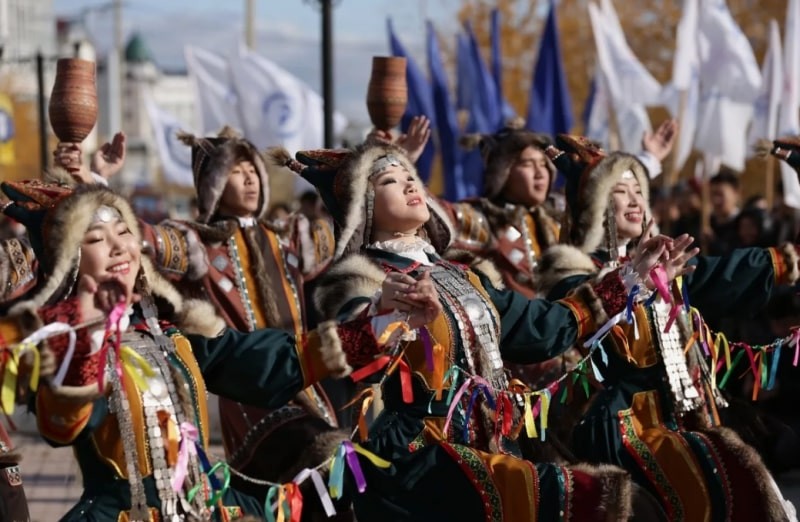
Yakut ethnic girls in their traditional costumes. (Photo: modasavod.ru) |
|
The Yakut people mainly rely on horses and reindeer herding to maintain their agriculture and food supply. The Yakut horse, known for its distinctive appearance and ability to withstand temperatures as low as −70°C, has even gained social media fame. Fishing in the Lena and Indigirka rivers is another vital aspect of life here. Perhaps, the Indigirka River never completely freezes, even in subzero temperatures, thanks to warm springs that flow from underground. |
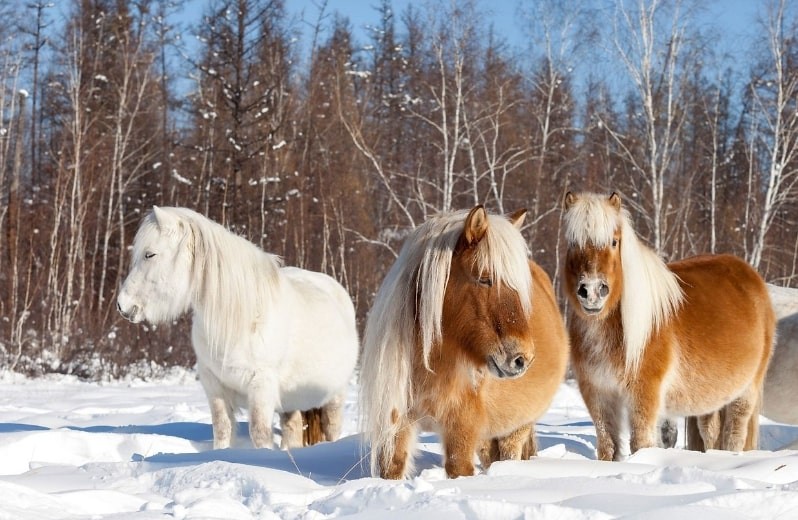
Yakut horse, a native horse breed of the Sakha Republic. (Photo: pofoto.club) |
|
In some northern parts of Yakutia, ice is the main source of drinking water during the winter. Blocks of ice, approximately 20 to 25 cm thick, are cut from frozen lakes and transported to homes for storage. |
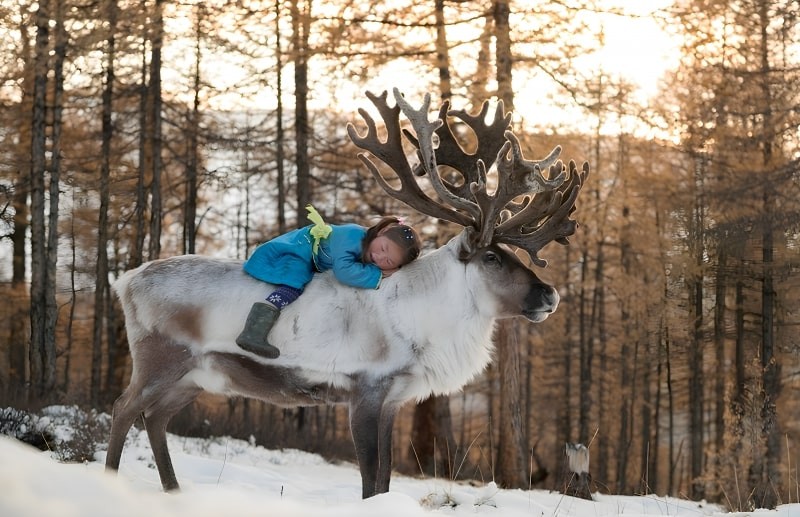 |
Oymyakon: A Village in a Winter Wonderland |
|
Oymyakon, a village in the Sakha Republic, is located about 1,000 km from Yakutsk capital. It is one of the coldest inhabited places on Earth, where despite the harsh winter, around 500 residents call it home. In January 2024, when temperatures dropped to −53°C, Oymyakon hosted a marathon called "The Pole of Cold – Oymyakon". Konstantin Dragunov, a 24-year-old professional runner from Megino-Kangalassky District, Yakutia, won the race, completing the 42 km course. |
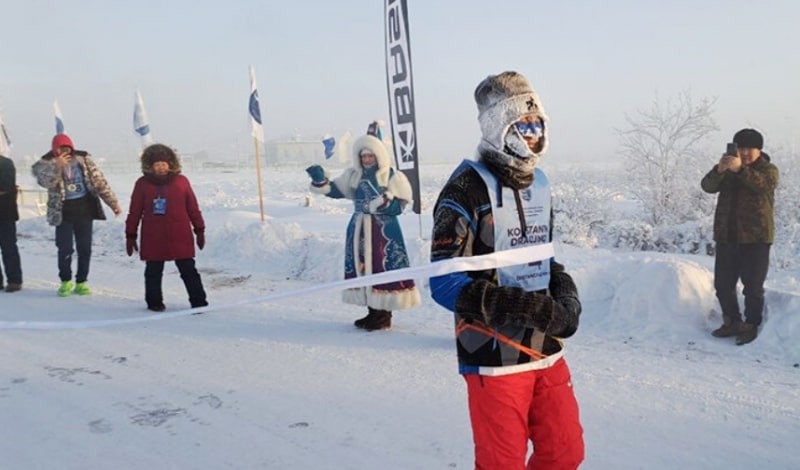
Konstantin Dragunov, winner of the Oymyakon marathon. (Photo: skisport.ru) |
|
Tourists often visit Oymyakon to witness the Northern Lights and engage in unique activities like turning boiling water into snow, driving nails with frozen bananas, and even taking a dip in icy rivers. Despite the extreme conditions, Oymyakon residents have access to essential facilities like hospitals, schools, power plants, and airports. Children attend school, play in the snow, and live relatively normal lives. The local outdoor market sells "frozen food" and other necessities, with winter goods often stored outside on balconies or in courtyards. As they say, in Oymyakon, a refrigerator is the most useless item because nature provides a giant "freezer." |
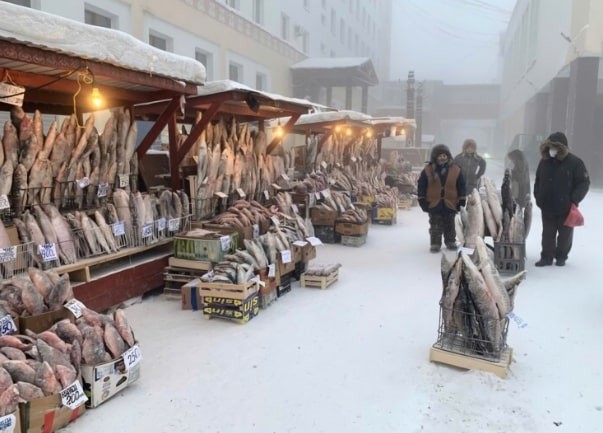
A traditional market in Oymyakon (Yakutia). (Photo: dzen.ru) |
|
Residents of Oymyakon and Yakutia know how to stay warm, using clothing made from animal skins and fur, and by improving their stoves and electric heating systems. In recent years, tourism has become a growing industry, offering activities like ice fishing, reindeer sledding, and trekking in the Lena Pillars mountains. |
|
|
|
Huyen Luu, an alumna of North-Eastern Federal University in Yakutia, fondly refers to Yakutia as her second home. Reflecting on her time there, she is most impressed by the unwavering optimism, resilience, and warmth of the local people. “No matter how harsh the weather is, the smiles of Yakutia's people never fade,” added Huyen. She hopes that beyond the awe-inspiring winter, more Vietnamese people will come to appreciate the unique and captivating life in Yakutia. |
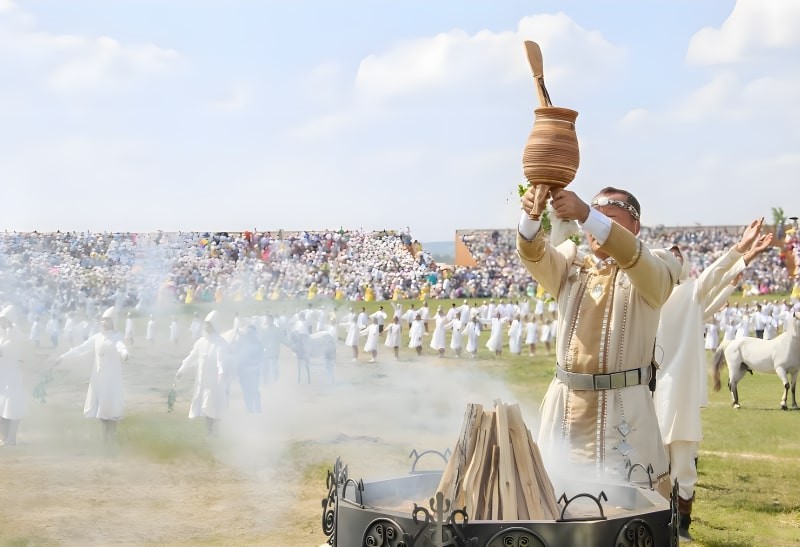 |
The "Ice and Snow" Culture |
|
Yakutia is not a land for vegetarians. The frigid climate demands a diet rich in meat to provide the necessary warmth and energy. The distinct cold weather profoundly influences the cuisine of Yakutia. One of the most iconic dishes is Stroganina, a delicacy of thinly sliced frozen fish served with makanina, a mixture of salt and pepper. |
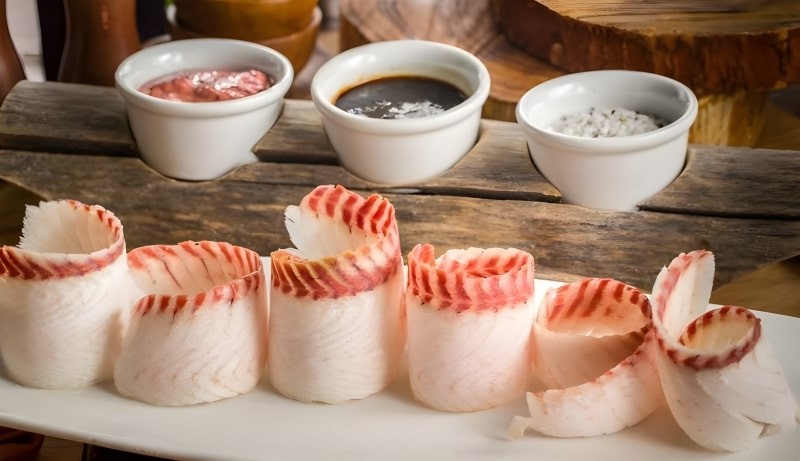
Stroganina (Photo: dzen.ru) |
|
In this harsh environment, horse and reindeer milk is also essential, providing sustenance in the form of cheese, butter, milk tea, yogurt, or simply as a drink. Reindeer milk, known for its tangy taste, contains higher fat and protein content than cow's milk, offering more energy to withstand the cold. The natural environment of Yakutia profoundly shapes the traditional culture of its indigenous people. The customs of the Yakut people demonstrate a deep connection to nature. The Ysyakh Festival, a traditional New Year celebration held during the summer solstice, honors the sun god Aiyy and celebrates fertility. The traditional melodies of the Yakut people, inspired by the sounds of animals such as mammoths, wolves, and eagles, evoke the vastness and mystery of nature and the strength of the people in Yakutia. |
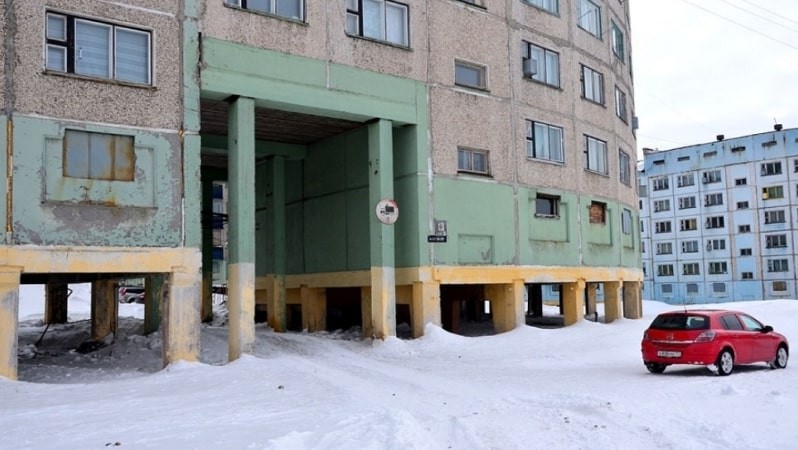
"Stilt house" architecture in Yakutia. (Photo: YASIA) |
|
The climate of Yakutia also influences its distinctive architecture. The ground in Yakutia is a mix of earth and permafrost, a layer of soil or sediment that remains frozen for two or more consecutive years. The oldest permafrost in Russia, dating back 650,000 years, is found in the village of Batagai, Yakutia. This permafrost can thaw if the surrounding temperature rises, causing significant geological changes and contributing to global warming. To combat this, homes are built on concrete stilts, creating an insulating layer that both retains heat and prevents the underlying permafrost from melting due to indoor heating. Additionally, these stilted structures keep homes from being buried under heavy snow in winter. |
A Land of Rich Resources |
|
The Sakha Republic, established in 1922 as an autonomous Soviet socialist republic, became an autonomous republic within the Russian Federation in 1991. Today, it has a population of 1,001,664 (2024 data from Rosstat, the Russian statistical agency). The Even, Evenky, and Yakut peoples are indigenous to Yakutia, with a dating history going back to the first millennium AD. They have preserved their language, culture, and traditions, which include livestock farming, hunting, fishing, and skilled craftsmanship in metal, wood, reindeer antlers, and mammoth ivory. |
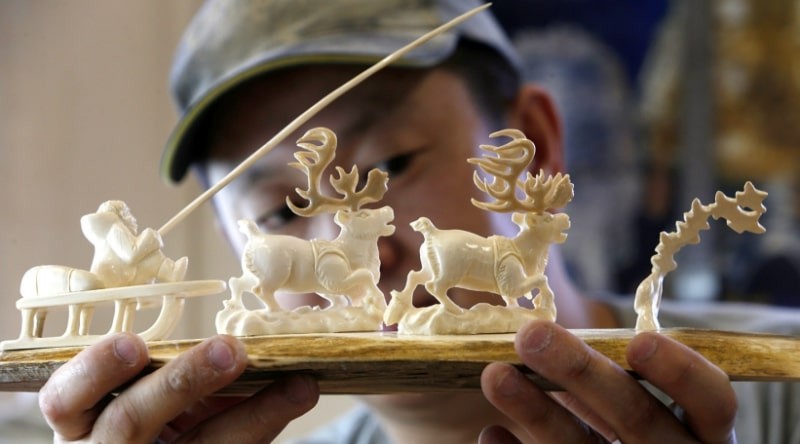
Sculpture from mammoth ivory. (Photo: Reuters) |
|
Yakutia is a vital economic region for Russia, with thriving agriculture and mining sectors. The extraction of raw materials, such as coal, oil, gas, and precious stones like gold, diamonds, and uranium, plays a significant role in the economy. Yakutia is an important link in the strategy to develop the northeast region and ensure the national security of Russia until 2030. For this region, national policy focuses on developing a variety of fields, including health protection, and upgrading road, air, and waterway transport infrastructure. infrastructure. |
Embracing the Future |
|
Yakutia faces challenges due to its harsh living conditions and vast territory, making goods and services more expensive than in other parts of Russia. The Yakut people strive to preserve their culture, language, and traditional economic activities in the face of social and economic changes, as well as the dominance of contemporary arts. Environmental issues, such as the melting of permafrost due to global warming, also pose significant challenges to the region's ecosystem and way of life. To address these challenges, the Ministry for the Development of the Russian Far East, in cooperation with local authorities, has attracted around 20 international investment projects to improve the quality of life for residents. The Russian government is committed to protecting the rights of indigenous peoples in the region, including preserving their traditional lands and livelihoods. In Yakutia's schools, classes are taught in Russian and Yakut, and students are encouraged to learn traditional music, play folk instruments, and develop a deep love for their cultural heritage. |

Traditional dance performance of the Yakutia people. (Photo: PAI) |
|
Yakutia, with its majestic beauty and unique identity, has inspired millions of works of art. In the novel "The Road to Yakutia," Russian author Anton Chekhov depicts the challenges of life in this remote land. Yakutia also features in the 2017 film "24 SNOW," which tells the story of a northern horse herder. |
|
Summers in Yakutia are relatively warm, offering visitors the chance to admire the unique formations of the Lena Pillars, ancient rock carvings at Turuuk Haya, and the peaceful beauty of valleys where horses graze by the riverbanks. In Yakutsk, visitors can explore the Kingdom of Eternal Permafrost Museum, showcasing ice sculptures and mammoth fossils. |
|
Yakutia holds some of the world's largest diamond reserves, accounting for 80% of Russia's diamonds and an estimated half of the global supply. The region is also rich in other precious stones, including sapphires, rubies, and diopside. |
|
Bach Duong |
